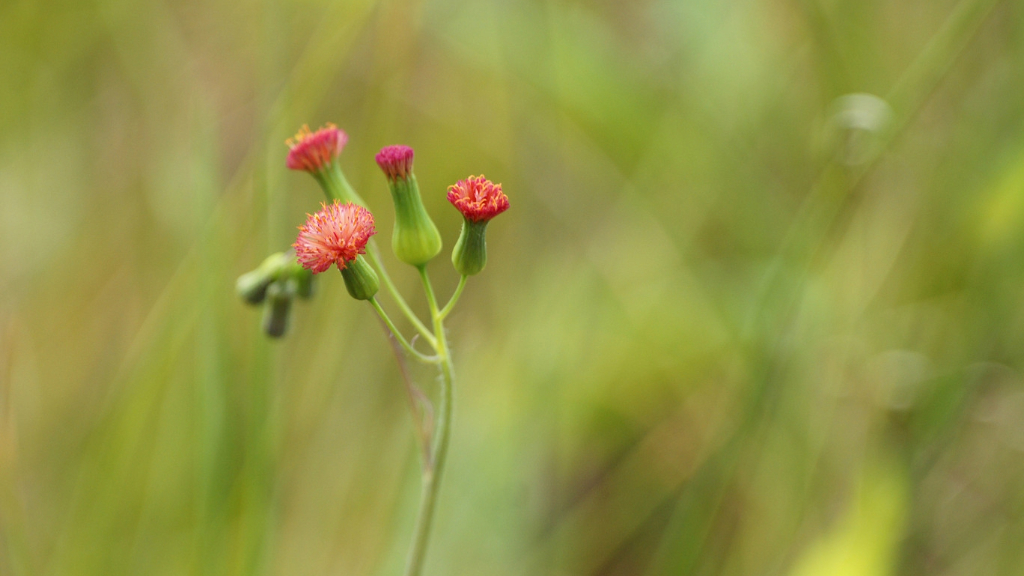History Of Irish Poet Tassel Flower


As soon as you start growing the heirloom plant known as the Irish poet tassel flower (Emilia javanica), you'll understand how they got their common name. The flame-colored puffball blossoms resemble the windswept, tousled hair so typical of an Irish poet. The pompon-shaped flowers grow in clusters on tall, spindly stems emerging from a basal rosette. The leaves of the rosette are an attractive blue green, but most gardeners pay more attention to the flowers themselves, in flamboyant shades of fiery red and orange.
Irish Poet Tassel Flower History
Irish poet tassel flower history reveals that the origins of this bright flower has nothing to do with Ireland. In fact, the history of Irish poet tassel flowers is shrouded in some mystery. Some claim that the plants originated in the Far East, others say Asia or tropical Africa. What is known for certain is that the small annual was introduced into England in 1799. You won't learn much by investigating other flowers in the plant's genus because there are none. Irish poet plant information tells us that it is the only species in the herbaceous genus, Emilia. It is, however, botanically related to the extensive Asteraceae family.
Irish Poet Plant Information
The plants producing these bright, tousled blossoms have played a surprisingly significant role in scientific research. The blossoms have antimicrobial properties, and scientific testing shows that they could be useful in the management of eye diseases. Tests have also proved the Irish poet tassel flower's effectiveness as an antidiarrheal medicine. Extracts were tested on rats at the University of Dschang and methanol extract was shown to significantly reduce the frequency of episodes of stomach upsets. If you are more of a cook than a scientist, you may be interested to know this part of Irish poet plant information. The blossoms and foliage can be used in salads or soups, adding a unique flavor.
Growing Irish Poet Tassel Flowers
If you are interested in growing Irish poet tassel flowers, sow the seeds in well-drained soil in a sunny location in springtime. Wait until all chance of frost is passed. Once the seedlings are developed, thin them so that they stand 6 inches apart.
Gardening tips, videos, info and more delivered right to your inbox!
Sign up for the Gardening Know How newsletter today and receive a free copy of our e-book "How to Grow Delicious Tomatoes".

Teo Spengler is a master gardener and a docent at the San Francisco Botanical Garden, where she hosts public tours. She has studied horticulture and written about nature, trees, plants, and gardening for more than two decades. Her extended family includes some 30 houseplants and hundreds of outdoor plants, including 250 trees, which are her main passion. Spengler currently splits her life between San Francisco and the French Basque Country, though she was raised in Alaska, giving her experience of gardening in a range of climates.
-
 What Is A Pollinator Garden? Grow Gorgeous Blooms While Benefiting Your Local Ecosystem
What Is A Pollinator Garden? Grow Gorgeous Blooms While Benefiting Your Local EcosystemPollinator gardens look great and also provide a diverse ecosystem that benefits your local pollinating insects and animals. Get started today with this guide!
By Bonnie L. Grant
-
 5 Tough Urban Trees That Thrive In Cities – Top Picks For Urban & Suburban Landscapes
5 Tough Urban Trees That Thrive In Cities – Top Picks For Urban & Suburban LandscapesExplore the best urban trees that will add value to even the most challenging of landscapes. Get growing with these ideas and enjoy all the benefits of trees.
By Teo Spengler